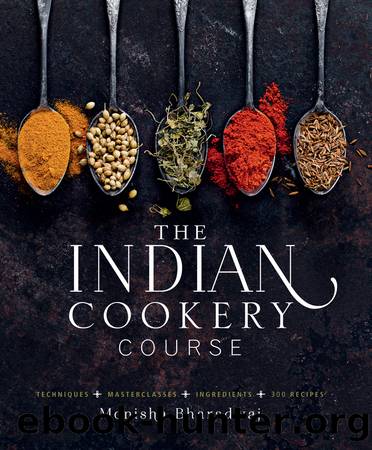The Indian Cookery Course by Monisha Bharadwaj

Author:Monisha Bharadwaj
Language: eng
Format: epub
Publisher: Octopus
Published: 2018-08-29T00:00:00+00:00
YOGURT
Yogurt, ‘dahi’ or ‘tayir’ as it is called in India, is integral to Indian food. Most Indians eat it several times a week if not every day. North Indians make lassi or raita or eat it with breads called paratha, whereas in the south they finish each meal with tayir and rice. In India, yogurt is also called curd. Unlike in the West, where milk is curdled with acid to form curd in the first step towards making cheese, curd in India refers to homemade yogurt.
The taste and texture of yogurt is important. The most preferred one is mildly tart but with a sweetness that ‘quenches the thirst’. It should be thick and not watery. The microflora in yogurt help digestion and in many parts of India, a meal is concluded with a thin drink called ‘chaas’ made by mixing a little yogurt with water. ‘Chaas’ is also the name given to the buttermilk left behind when butter is churned out of yogurt or cream.
Yogurt has been eaten in India since prehistoric times. The Rigveda mentions it as mixed with ground meal: ‘The other (Pusan the Nourisher) longs for curd and meal’. The Arthashastra (c.350–283 BCE), a treatise on statecraft, advises how to deal with spies who offer you poisoned curd, and marinating meat with curd is mentioned in the Ain-i-Akbari, the Mughal emperor Akbar’s memoirs.
Download
This site does not store any files on its server. We only index and link to content provided by other sites. Please contact the content providers to delete copyright contents if any and email us, we'll remove relevant links or contents immediately.
Trullo by Tim Siadatan(2985)
The French Women Don't Get Fat Cookbook by Mireille Guiliano(2977)
Better Homes and Gardens New Cookbook by Better Homes & Gardens(2950)
Super Food Family Classics by Jamie Oliver(2906)
Panini by Carlo Middione(2824)
Hedgerow by John Wright(2772)
Bread Revolution by Peter Reinhart(2635)
Sauces by James Peterson(2587)
Jam by Jam (epub)(2482)
Ottolenghi - The Cookbook by Yotam Ottolenghi(2354)
Oh She Glows Every Day by Angela Liddon(2306)
Hot Sauce Nation by Denver Nicks(2104)
The Culinary Herbal by Susan Belsinger(2057)
My Pantry by Alice Waters(2036)
The Art of Making Gelato by Morgan Morano(1897)
Wanderlust by Jeff Krasno(1890)
Basic Illustrated Edible and Medicinal Mushrooms by Jim Meuninck(1887)
Meathooked by Marta Zaraska(1884)
Veg by Jamie Oliver(1866)
